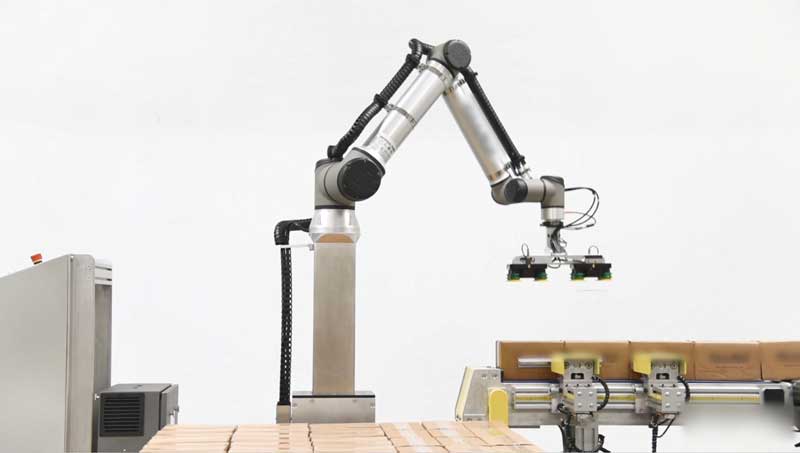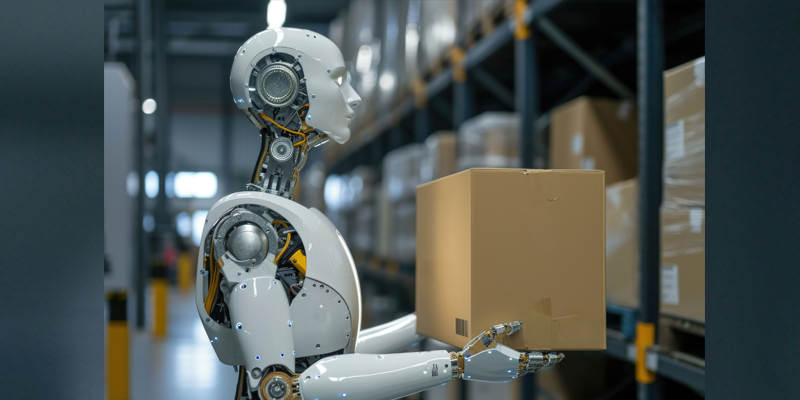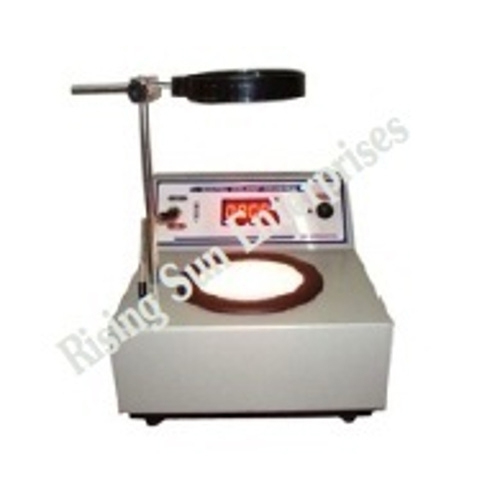Schedule a Call Back
Cobots: Small size, BIG impact
 Industry News
Industry News- Nov 30,22

Two-wheeler assembly lines are often highly labour-intensive and physically taxing for workers on the shop floor. Despite these challenges, maintaining high precision is the top priority. So when Bajaj Auto (one of India’s leading two-wheeler manufacturers) was looking for solutions to automate its assembly lines in 2010, the company opted for collaborative robots (cobots) from Universal Robots. Cobots’ compactness, low pay back period, flexibility, light weight, cost-effectiveness, accuracy and their safety convinced Bajaj Auto about their benefits; ultimately leading to more cobots being deployed in the manufacturing plant. This can be considered as the start of cobot automation in India.
Thereafter, more companies - including small & medium enterprises (SMEs) such as Craft and Technik Industries (CATI), Shruti Engineers, etc – have opted for cobots as they offer low-cost automation route to increase efficiency and productivity. “SMEs are businesses with limited resources, particularly in terms of capital and space. As a proven, valued, and accessible tool for organisations to begin automating tasks while increasing workers’ efficiency, safety and well-being, collaborative robots are doing wonders for manufacturers. For instance, the Pune-based Shruti Engineers - the 10-man company that manufactures assembly components for automotive lines – was able to increase daily output by 75 per cent thanks to a cobot by Universal Robots - UR10,” says Sougandh K M, Country Manager of India, Universal Robots.
Helping SMEs automate
The global cobot market is projected to grow from $ 1.23 billion in 2022 to $ 11.04 billion by 2030 at a CAGR of 31.5 per cent, according to Grand View Research (GVR) report. The primary reason for this robust growth can be attributed to the increasing adoption of collaborative robots by SMEs as compact, low-cost cobots are ideal for them. “SMEs’ products are generally characterised by small batches, customisation, and short cycles. It is too costly to make large-scale transformations on the production line, and they are more sensitive to the ROI of the product. This requires robots with low overall costs, rapid deployment/redistribution capabilities, and easy-to-use methods that are difficult to meet with traditional industrial robots,” explains Maya Xiao, Senior Analyst, Interact Analysis.
In the past, automation was viable only for large companies who had the space, cash, and technical resources for large investments in traditional industrial robots. Companies needed large runs of the same products and processes over long periods of time. Investments took years to pay for themselves. “Collaborative applications, however, provide a quick and easy entry-point to automation, particularly for smaller manufacturers whose businesses have lower-volume, high-mix production lines. With this technology, SMEs can emerge more competitive with greater production flexibility, higher output, and better quality,” explains James Taylor, General Manager, APAC, OnRobot - the Denmark-based company that provides hardware and software solutions for collaborative robotic applications.
In addition to being scalable and versatile, cobots are also becoming more affordable due to innovations and dropping component prices (thanks to China). While a cobot would cost Rs 15-20 lakhs few years ago, they are now available for less than Rs 8 lakh.
Automotive leads the pack
In addition to their capability to reduce floor space and the cost of production downtime, cobots find important usage in spot and arc welding, assembling parts, and painting and coating, among others. All these factors make automotive industry the leading user of cobots. The automotive segment accounted for a share of more than 24 per cent in the global cobot market in 2021 and is expected to grow substantially in the coming years.
Sougandh explains, “Vehicle production offers the most industrial robot applications because there are so many types of processes involved from assembly and machine tending to part inspection and finishing. All of these tasks and more can successfully be performed by collaborative robot arms.”
The need to increase factory and warehouse automation and the shortage of labour are the key drivers for cobot penetration. New applications in manufacturing (especially in food and beverage, alternate energy, etc) present opportunities for cobots. “Collaborative robots are accelerating their expansion into non-industrial application fields. The price of cobots has dropped significantly, lowering a barrier for end-users, and many vendors have launched competitively-priced collaborative robots with the aim of penetrating the non-industrial market,” Maya Xiao adds.
Demand for industrial automation is soaring in India and is expected to reach $ 23.09 billion by 2027, increasing at an annual growth rate (CAGR) of 14.26 per cent from 2020 to 2027. “This demand is also driven by the governments push towards modernising the manufacturing sector with the goal to increase the industry’s contribution to 25 per cent of GDP by 2025,” says James Taylor.
Emerging trends
According to Maya Xiao, some of the key trends to watch out for in the cobots industry are:
With the increase in demand for human-robot collaboration, the safety standards of cobots are increasing. “AI and IoT-enabled cobots have sensors and laser cameras installed in them to decrease the risk of accidents. Additionally, they can detect the presence of a human colleague in their immediate proximity and adjust to avoid collisions. They are easy to train in new tasks, thanks to machine learning,” adds Sougandh.
Collaborating to reach $1 trn threshold
The demand for collaborative applications is expected to increase in India as the Union Government aims to drive the manufacturing sector to contribute 25 per cent of the country’s GDP by 2025, up from 16 per cent today. This rising demand is expected to be driven by automotive, electronics and metals/machinery industries.
India has 7.9 million SMEs, who account for 33 per cent of India’s GDP, more than 45 percent of the country’s total industrial production and 40 per cent of total exports. Greater adoption of automation and collaborative applications can help SMEs accelerate the country’s manufacturing output. “I believe collaborative automation will play a key role among SMEs as India expands its Make in India initiatives, ultimately becoming a necessity for the country to stay competitive and attractive to international investors - and for its manufacturing sector to reach its $ 1 trillion potential by 2025,” concludes James Taylor.
Technological advancements have enabled cobots to perform a similar range of activities when compared to traditional industrial robots. Versatility offered by small-sized cobots help them make big impact on the manufacturing sector.
Related Stories

Let’s decarbonise: A turning point for mining in Asia
Sustainability uncertainties in mining are well known. Encouragingly, mining is already undergoing a notable transformation—one that brings with it great potential to build a more resilient and su..
Read more
Global industrial robot shipments down in 2024, recovery likely in 2025
As investment cycles pick up and demand stabilises across key industries, 2025 could mark the beginning of a new growth phase, albeit one characterised by tighter margins and more nuanced competitio..
Read more
We see strong demand for process equipment in next 5 years: Shalabh Singh
in this exclusive conversation with Rakesh Rao, Shalabh Singh, Chief of Business Development at Isgec Heavy Engineering Ltd, delves into how Isgec is aligning itself with national priorities while t..
Read moreRelated Products

Digital Colony Counter
Rising Sun Enterprises supplies digital colony counter.
Robotic Welding SPM
Primo Automation Systems Pvt. Ltd. manufactures, supplies and exports robotic welding SPM.

Heat Exchanger Scale Removal Compound -hesr-300
Hi There!
Now get regular updates from IPF Magazine on WhatsApp!
Click on link below, message us with a simple hi, and SAVE our number
You will have subscribed to our Industrial News on Whatsapp! Enjoy















